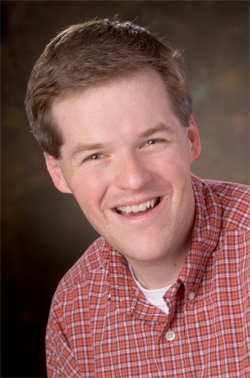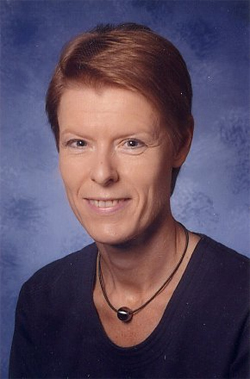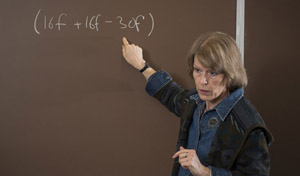Two Ohio University physicists are presenting at the 22nd European Conference on Few-Body Problems in Physics in Krakow, Poland, Sept. 9-13. The professors are from the Department of Physics and Astronomy in College of Arts & Sciences. Both are also members of the Ohio University Institute of Nuclear and Particle Physics. The conference presents recent developments in the few-body physics over a wide variety of problems, including:
- Nuclear forces and few-nucleon systems
- Light nuclei and electroweak probes
- Few-hadron systems (including quark models)
- Hypernuclei, strange and exotic systems
- Relativistic description of few-body systems
- Effective Field Theory applied to few-hadron dynamics
- Nuclear structure, clusters and halos
- Atoms, molecules, condensates and quantum dots
Dr. Daniel Phillips, Professor of Physics and Astronomy, presents a talk on “One- and two-neutron halos in effective field theory.”
“In this talk, I will discuss recent work our group has undertaken to treat one- and two-neutron halos in effective field theory (EFT),” he notes in his abstract. “In Refs. [1,2] we demonstrated that an EFT containing core and neutron degrees of freedom, which is built on the scale hierarchy Rcore ≪ Rhalo, can be used to analyze the Coulomb dissociation of one-neutron halos (specifically: 11Be and 19C). I will first describe our analysis of 19C Coulomb dissociation data [2]. There is a good separation of scales in this system because of the ≈ 500 keV one-neutron separation energy of 19C, c.f. S1n(18C) = 4.2 MeV. We obtained accurate values for this neutron-separation energy and the effective-range parameters of the n18C system by fitting the results of this EFT to the experimental data [3] on the Coulomb dissociation cross-section. The extracted values were used to predict the longitudinal momentum distribution, which was compared to data from Ref. [4].
“I will then turn my attention to two-neutron halos. Here we analyzed the recent measurement of the rms matter radius of 22C: hr2 m i1/2 = 5.4±0.9 fm [5]. By applying universal relations derived from EFT to 22C, and including estimates of higher-order EFT corrections in a treatment where 20C is an inert core (its matter radius is markedly smaller than that of 22C), we were able to put constraints on the poorly-known values of the 22C two-neutron separation energy and n20C virtual energy using this experimental datum. We found that the 22C two-neutron separation energy must be less than 100 keV, even after the quoted errors on the experimental datum and the theoretical uncertainty are accounted for. We also studied the implications of this result for the existence of bound excited Efimov states in the 22C system and found that the n20C system needs to have a virtual state within a keV of threshold for such states to occur [6]. We are presently analyzing 6He in a similar EFT framework. If time permits I will discuss those results also.
Dr. Charlotte Elster, Professor of Physics and Astronomy, presents a talk on “Momentum Space Coulomb Distorted Matrix Elements for Heavy Nuclei.” This work was performed within the TORUS Collaboration, a topical collaboration supported by the U.S. Department of Energy. Elster is also on a panel discussion on “The future of few-body physics.”
“Single particle transfer reactions (d,p) involving rare isotopes are an important tool to study nuclear structure,” she notes in her abstract. “In addition, one can connect the (d,p) process with the neutron capture process, a topic of great relevance to astrophysics and the questions around the synthesis of heavy elements. The (d,p) reaction may be viewed as a three-body n+p+A problem, in which the deuteron and the nucleus A act as participants in the reaction. Currently, the most advanced momentum space Faddeev-type reaction calculations use a screening procedure for the Coulomb interaction, which is adequate only for light and medium mass nuclei [1]. Recently, a Faddeev-AGS formalism for (d,p) reactions with explicit inclusion of the unscreened Coulomb interaction was proposed [2]. A crucial di erence here is the use of a Coulomb basis instead of the plane wave basis….”





















Comments